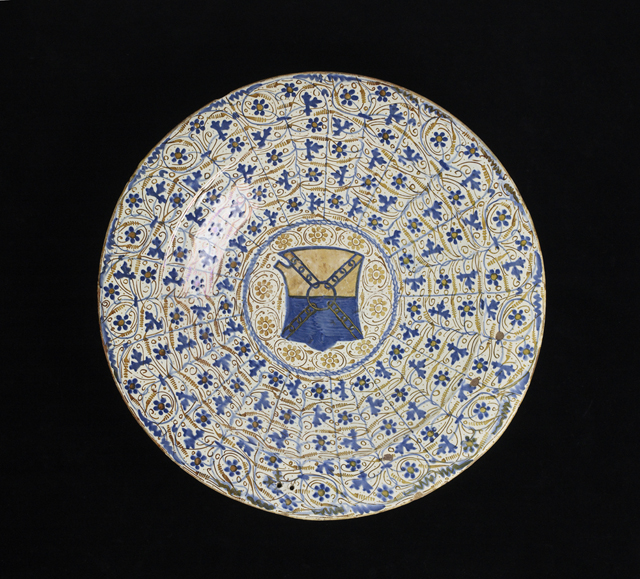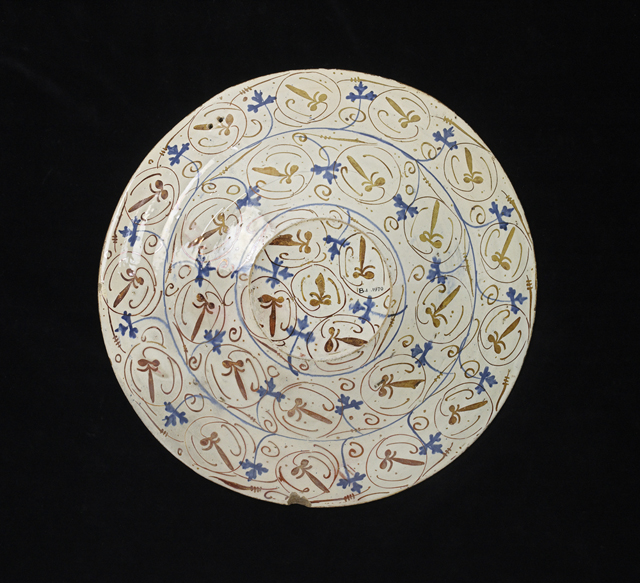Browse Collection
5 of 236

Dish with arms of Zati of Florence
Manises, c. 1420 - 1470
47.6cm (diameter)
tin-glazed earthenware (maiolica)
The decoration of daisy-like and trefoil flowers in blue with lustre tendrils is known as “bryony pattern”, though it is not clear that it was intended to represent a particular plant. It was a common design on wares made for export, and fragments of Valencian lustreware with this sort of pattern have been excavated in London and the ports of southern England. The reverse of the dish has tendril and trefoil ornament pattern in lustre and blue.
The best export customers for Valencian potters in the 15th century were the affluent merchant families of Florence and elsewhere in Tuscany, which formed the centre of a network of international banking and finance that encompassed the Spanish ports of Barcelona, Valencia, and Seville, as well as the northern European trading cities of Bruges and London. The Zati were a prominent Florentine family whose name seems to have survived in the villa outside Florence known as “I Tatti”, once owned by Bernard Berenson and now a part of Harvard University.
On loan from the British Museum. LI183.2

Click to hide image
Other Images

Click to hide image

Click to hide image

|

|